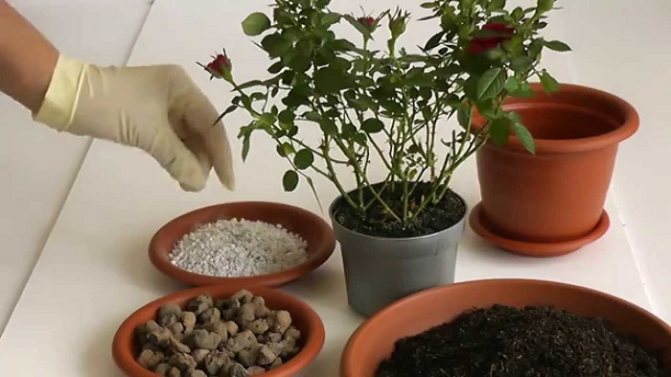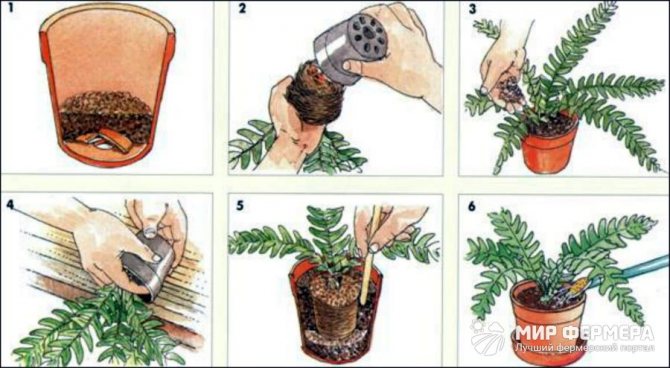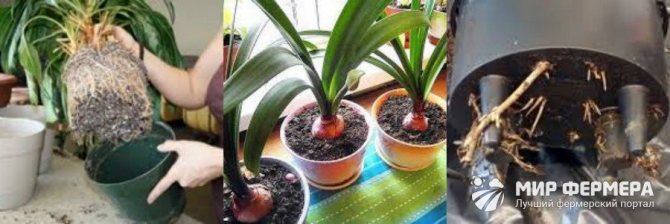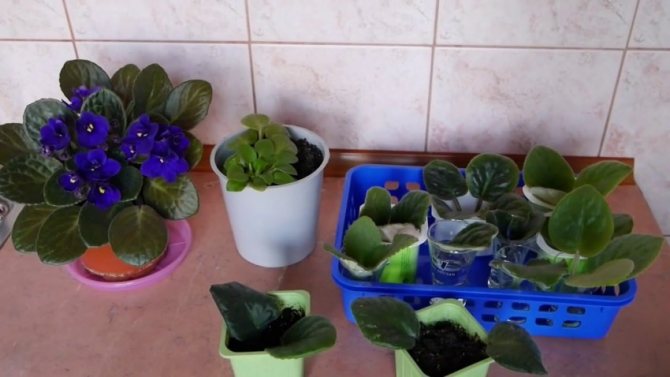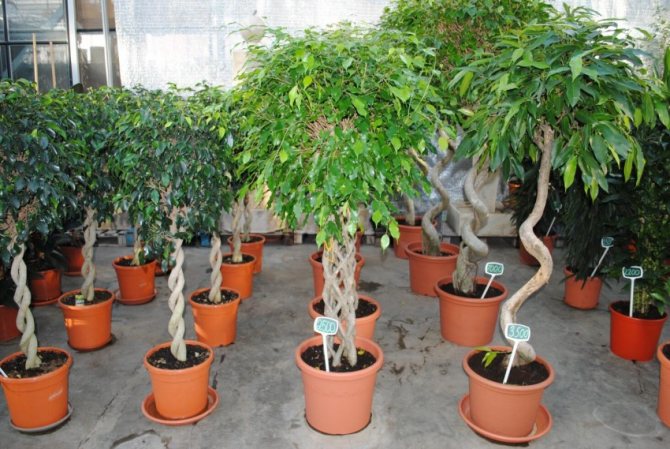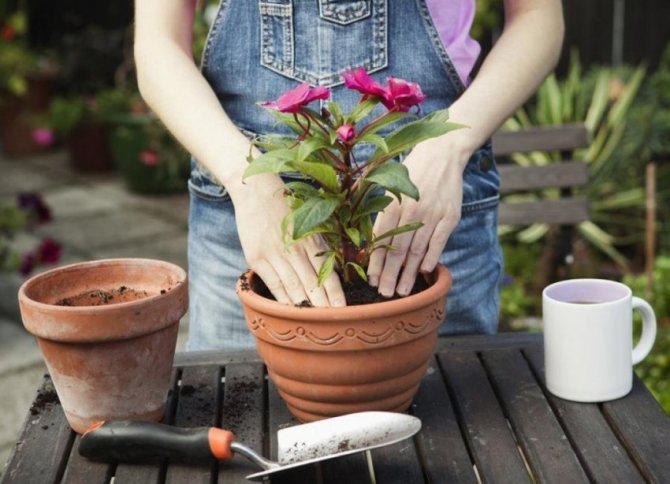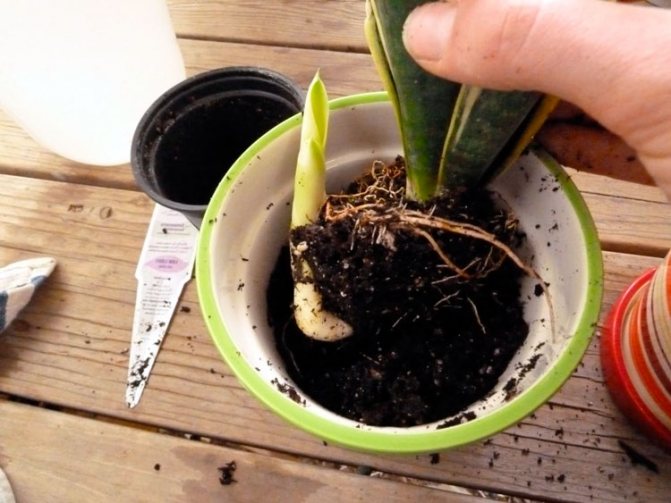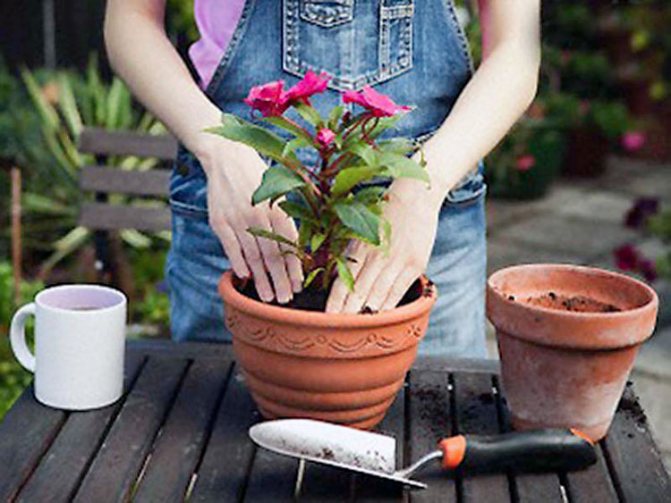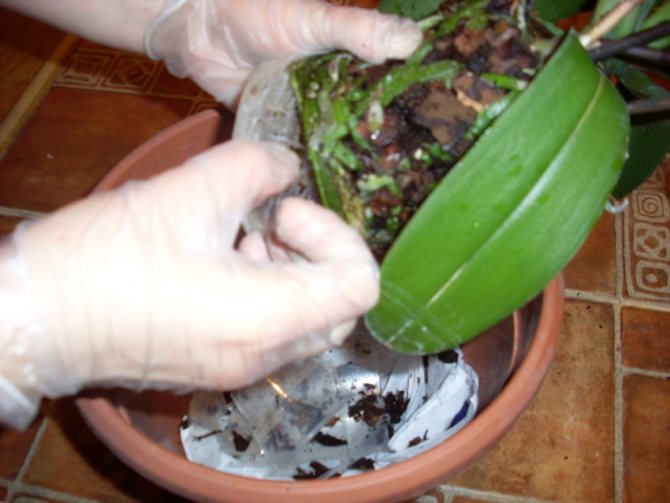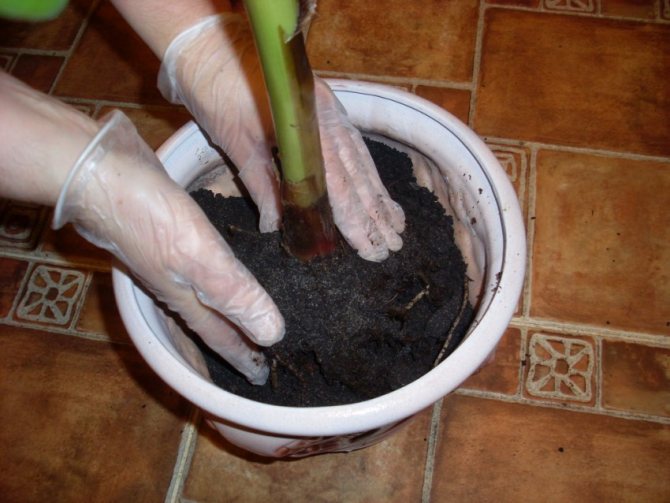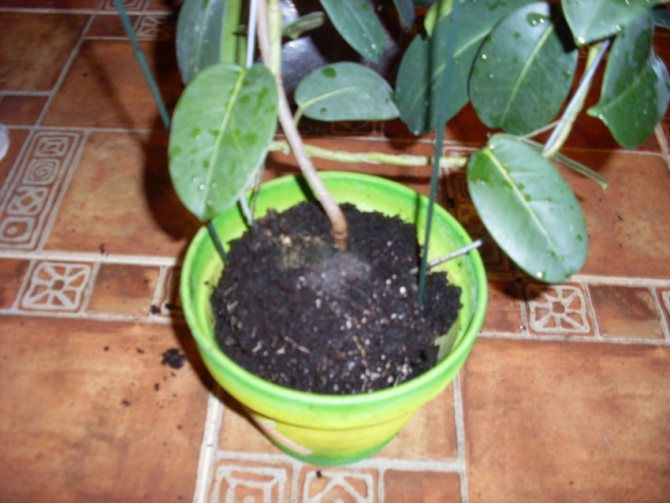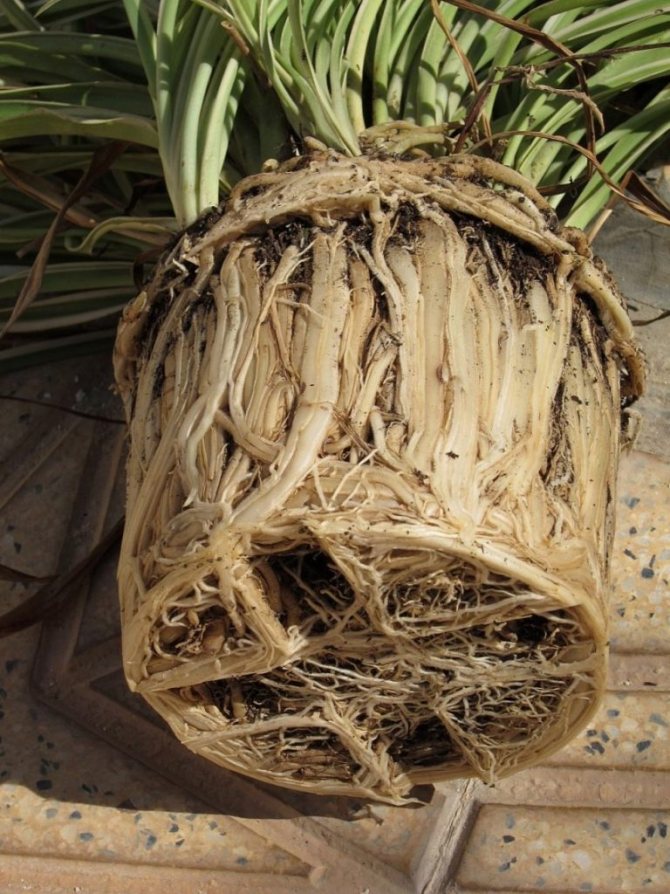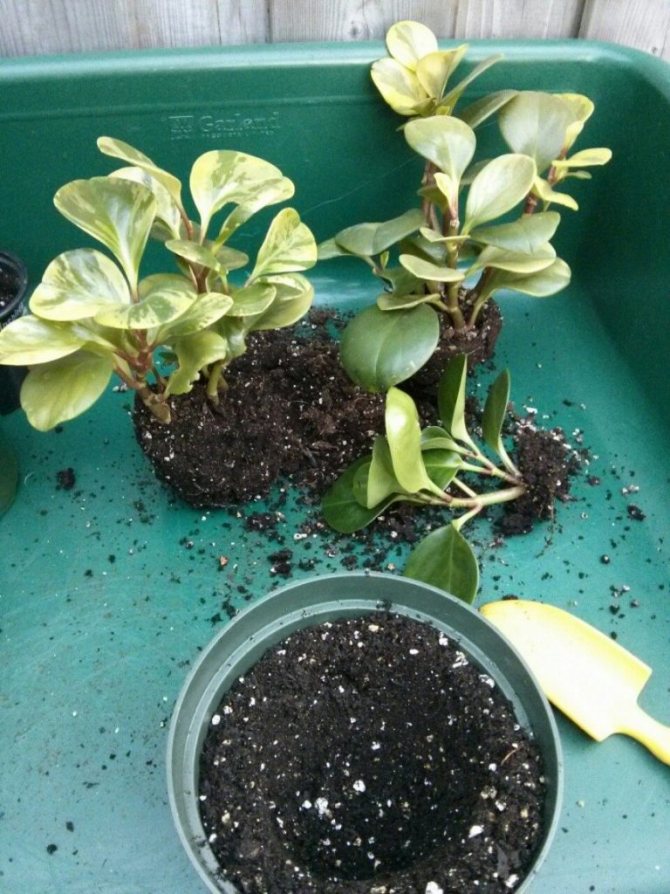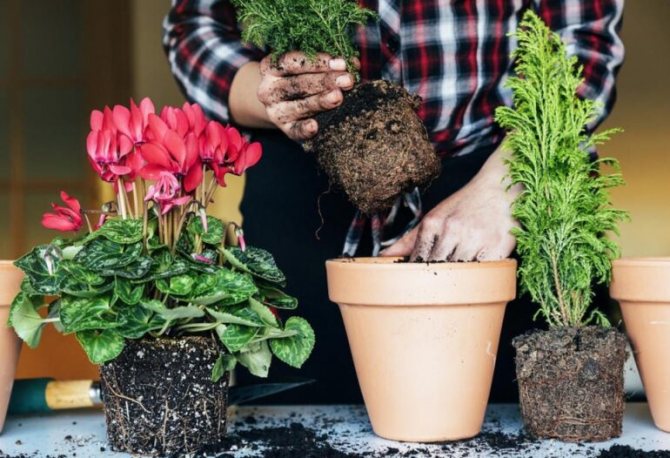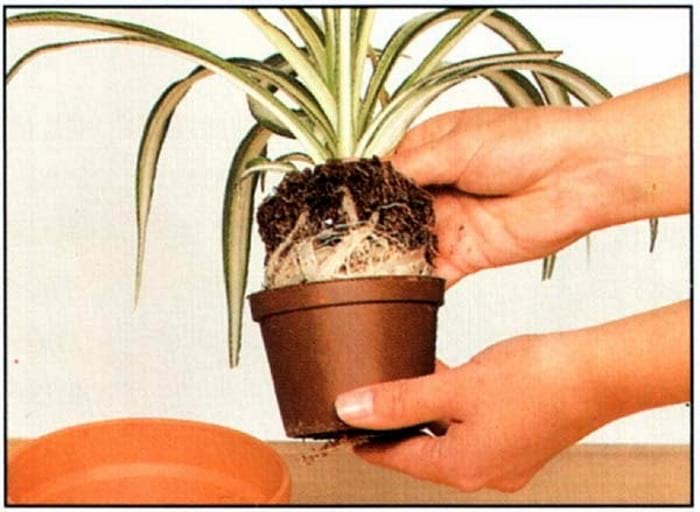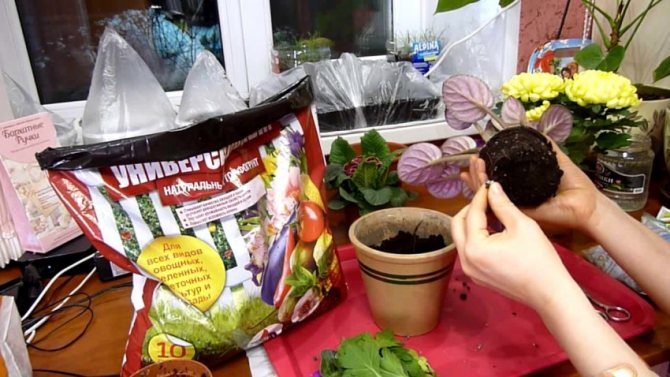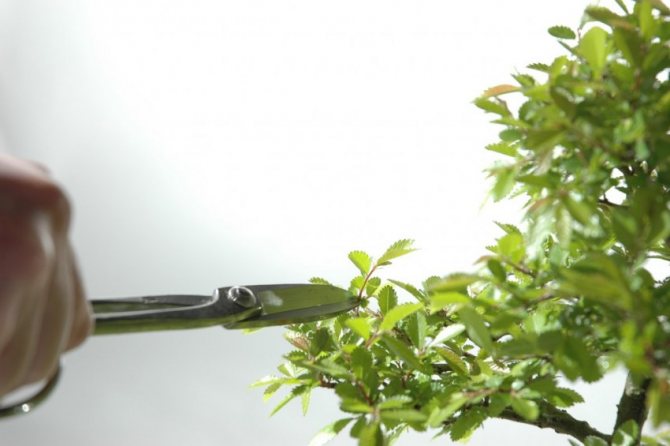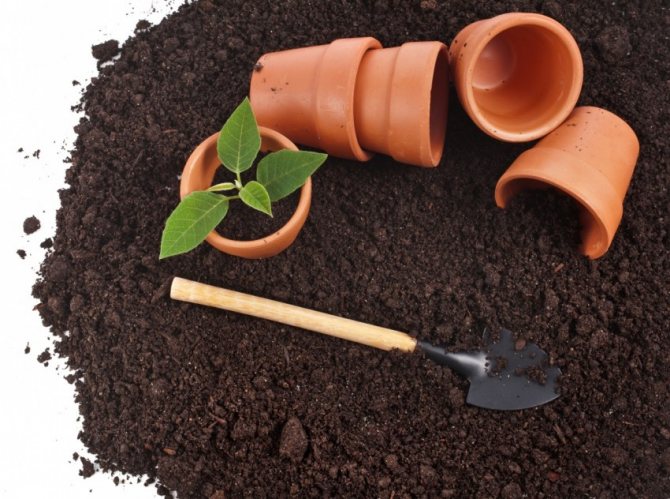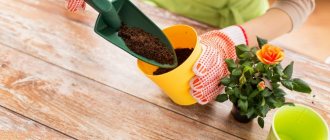When can you transplant indoor flowers
This procedure is best done with the arrival of spring. The choice of the month - March, April or May - depends on a number of factors. Flowers usually start growing faster in spring and need fresh soil and fertilization.

Flowers in pots sometimes require transplanting
It is better to transplant after flowering or long before it begins, during the dormant period. If buds appear, then the procedure should be postponed until next spring. January, February, like any winter month, are not suitable for this.
Perennial flowers are recommended to be transplanted at least once every 2 years. If they grow very slowly, then transplant should be done once a year. Cacti can live freely in the same soil for over 5 years.
Advice! You can be guided by the lunar calendar in order to know when to transplant indoor flowers, according to it, the most auspicious day is chosen.
It is better to buy a calendar for a year to know which days are the most favorable. It is believed that transplanting indoor plants during the full moon is not a good idea. Home flowers are usually transplanted during the growing moon or when the moon is in fertile signs - Pisces, Taurus, Cancer.
Cut flowers and plant bulbous plants for distillation
In theory, it is permissible to cut herbaceous plants by cuttings all year round, but experienced florists do not advise doing this in winter due to the same state of dormancy. In early autumn, you can try to cut plants such as tradescantia, pelargonium, begonia, saintpaulia and some others.
In addition, some plants, such as bulbs, can participate in winter forcing. Therefore, if you have hyacinth, crocus or daffodil bulbs in your house, you may well plant them before winter in order to wait for their gorgeous flowering just by March 8th.
Emergency transplant
Watering indoor plants in the absence of owners for 2 weeks or a month
An emergency procedure is performed if the flower is in a very neglected state:
- overflowed with water and root decay occurs;
- leaves begin to fade and turn yellow;
- pests have started;
- the roots do not have enough space at all in the pot;
- the flower doesn't grow anymore.
When can you transplant flowers in this case? At any time. After all, the risk that the bush will die from overflow or from pests is higher than the season outside the window.
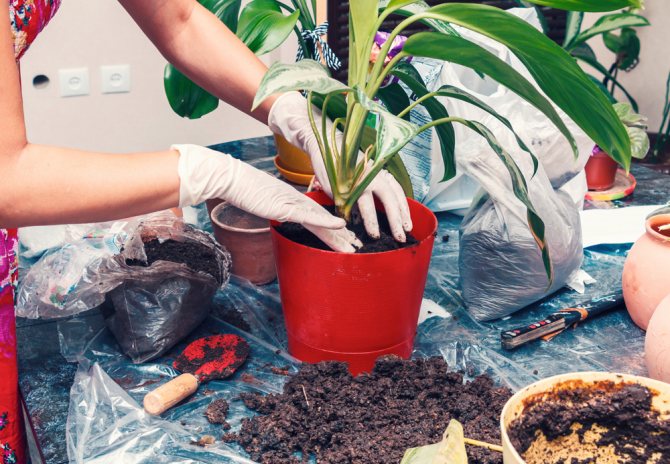

The flower is transplanted into a larger pot as it grows
Sometimes mechanical factors also happen, for example, the flowerpot may fall and break. In this case, the flower is immediately moved to a new pot.
Important! A transplant should be done only if the tree really needs it. And it's not worth changing the soil and the pot just like that - this plant is experiencing great stress.
Treat plants from diseases and pests
Preventive treatment of indoor plants with insecticides against diseases and pests must be carried out without fail, even if you have not been transplanting. The reason is that whiteflies, aphids, ticks, as well as pathogens of various diseases that plants can get sick with against the background of changing conditions of their keeping, often get into the house from the street on the leaves of flowers.
As a rule, information on the dose and frequency of prophylactic treatment is in the instructions for the corresponding drug.If you are spraying a flowering plant, be careful not to get the spray on the flowers. When foliar feeding, be sure to work with gloves.
Remember that diseases and pests are active not only in the warm season, but also in winter. For this reason, you need to regularly inspect the leaves and stems for the presence of appropriate manifestations on them.
How to properly transplant home flowers using the transshipment method
Houseplant pests and indoor flower diseases
Transfer is used when the roots have covered all the free space in the ground. Many plants have very fragile roots. Such a plant must be watered in advance, then walk along the edge of the earth with a sharp knife, and gently holding it with two fingers, remove it from the pot onto the palm of your hand with earth and roots.
Important! There is no need to shake the ground, as this will damage the roots. The plant will recover for a long time and there will be no improvement after transplantation.
Next, you need to carefully transfer the bush to a prepared pot with filled drainage. A plant placed in the center with an old lump of earth is covered with fresh earth in a circle, filling the space between the walls of the pot, and then lightly tamped.
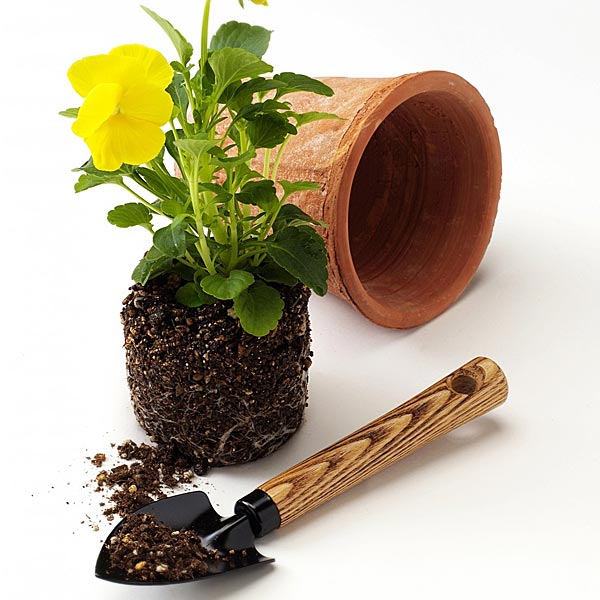

The plant is removed from the pot along with a lump of earth.
Gardening tools for transplanting
Before starting the procedure, you should prepare everything you need: a pot, drainage, soil, a sharp knife, coal, garden shovel.
Mandatory watering
If the transplant is carried out by transshipment, then initially you need to properly water the land. This is necessary so that you can effortlessly extract the plant along with the roots. Hold the plant by its base and flip the pot on its side. After that, it can be easily pulled out. Take a look at the root system. If there are rotting roots on it, then they must be removed. Also remove old drainage. After all the above steps, the flower can be placed in a new pot.
The correct plant transplant process
First of all, you should know which species the flower belongs to. This will help determine the size of the pot, because each plant has its own preferences. Some love a free flowerpot, while others prefer to live in cramped conditions.
Favorable days for transplanting indoor plants
Usually, plants that are cramped are transplanted into a larger pot. It is impossible to move from a small container directly to a large one, since the plant may die or simply not take root. A bush or tree must first be watered, so that it is easier to remove it from the pot, and, if necessary, shake off the bad soil.
Advice! It is better to buy the soil in the store, since it contains all the nutrients and necessary substances.
The transplanting process is a great opportunity to assess the condition of the roots. If there are dried and damaged roots, they should be cut off, and the cut site should be treated with charcoal or potassium permanganate solution.
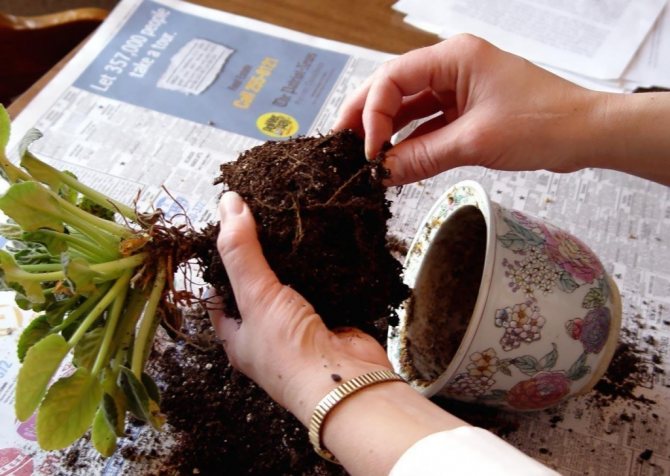

Dried and damaged roots are best removed
The landing procedure looks like this:
- Drainage is laid at the bottom of the pot with a thickness of about 2 cm.
- Place the plant in a pot in the center.
- The free space is filled with fresh earth, slightly tamping.
The earth is tamped down because it usually settles after watering. Often after transplanting a little more soil is added to the flowerpot.
Tips for florists
- Gradually increase the size and volume of the pot. A sharp jump to large containers will lead to a slowdown in growth.
- The clay pot should be placed in water overnight., and fill the drainage hole with shards before filling in new soil.
- Choose a soil based on the preferences of a particular type. Universal mixtures may not meet the requirements, therefore, flower growers resort to compiling their own compositions with the obligatory addition of peat.
- If the roots are too tightly covered with an earthen ball or the root system is underdeveloped, then you will need to carefully clean it from the adhering earth with a knife or fork.
- Only adapted plants that have already become accustomed after transportation can be transplanted. You should not change the soil in the first days after purchasing a flower!
- Be sure to place a drainage layer on the bottom of the pot. (its thickness varies depending on the type of flower).
- Each species requires a special attitude to its root system: some plants require root cutting., in others it is strictly forbidden to trim the shoots. Check with specialists for handling the roots.
- The best material for the pot is clay. It ensures proper air exchange and simplifies plant development and work with it. Plastic counterparts often cause delayed development and disease.
If you follow these rules, your plant will live the entire allotted time and will develop correctly and naturally.
How to check the need for a transplant
To check if a plant needs a new pot or soil, you need to carefully remove it along with a clod of earth. If it holds firmly, you need to slightly moisten the soil.
If all the soil is shrouded in roots, which are desperately trying to penetrate through the holes in the pot, then there is definitely not enough space for them, and it is urgent to relocate the flower. If there is still free space in the container for root growth, then it is better to postpone the transplant for now.
It also happens that a plant stands in one place for a long time - it does not grow, does not bloom, does not release buds and new shoots. In this case, it makes sense to have an urgent transplant.
When is an autumn transplant definitely going to hurt?
In the fall, even with plant health problems (with the exception of serious disease or pest damage), signs of lack of space in the pot or growth problems, it is not always possible to carry out an emergency transplant.
Even with "indications" for a transplant, it is worth abandoning it in the fall:
- for plants that go through the budding or flowering stage;
- for crops in a highly weakened state (for other reasons not related to the soil);
- with a sharp change in temperature or in extremely unstable temperatures;
- at the very beginning of the period of operation of heating systems (plants need to be given time to adapt to the new environment).
The choice of drainage and earthen mixture
It is recommended to lay drainage at the bottom of the container with a layer of 3-4 cm.Use as drainage:
- expanded clay;
- coal;
- gravel;
- shards.
Sometimes spruce needles and bark are placed as drainage. In some cases, a large drainage layer is required - almost 1/3 of the pot.
But in any case, the soil must always meet the following requirements:
- be nutritious;
- let air into the roots;
- contain acidity for certain species;
- have no pests;
- do not retain moisture.
The right choice of soil
You can not use simple land from a garden or vegetable garden for transplanting. It is most often oversaturated with minerals and salts, which were introduced as a result of fertilization.
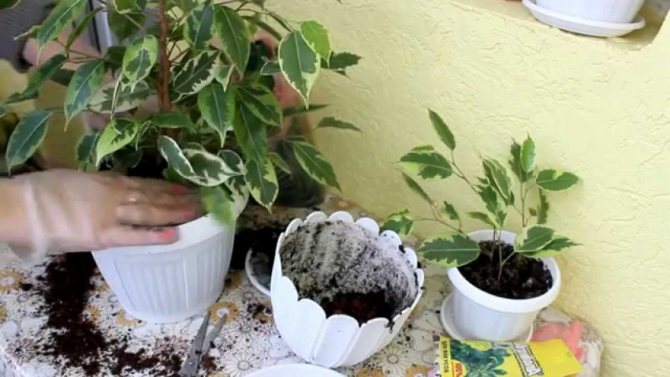

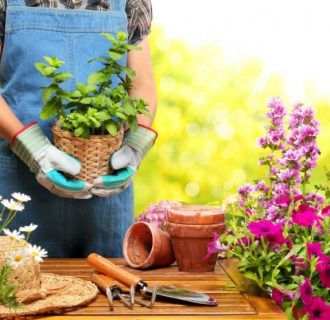

Indoor plant lunar calendar for 2020 - planting, transplanting and features of growing plants this year (120 photos)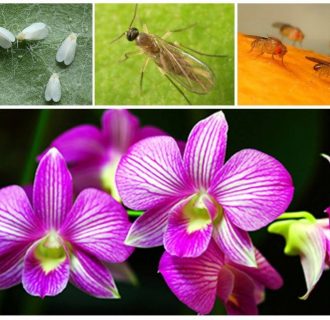

Midges in indoor flowers: step-by-step instructions and tips for getting rid of midges and insects (110 photos and videos)
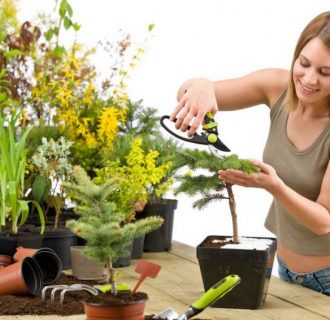

Feeding indoor flowers: feeding rules at home. 155 photos of the best tools and video instructions for use
If it is not possible to buy special soil, forest sod may be suitable. It needs to be sterilized. Taking a metal pan and pouring earth into it with a layer of 15 centimeters. Boil in a water bath for about 25 minutes.
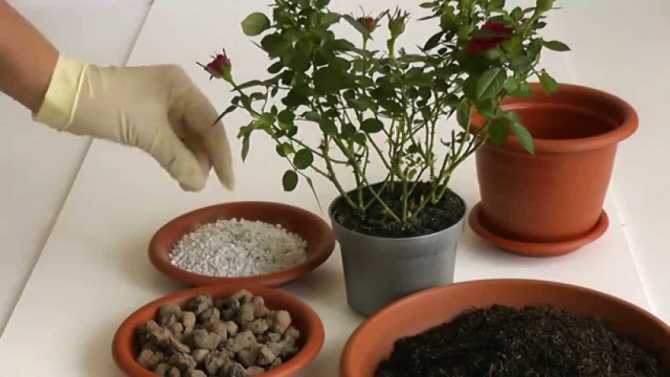

You can also put a layer of earth on a baking sheet. Cover with foil and send to the oven at 90 degrees for 10 minutes.
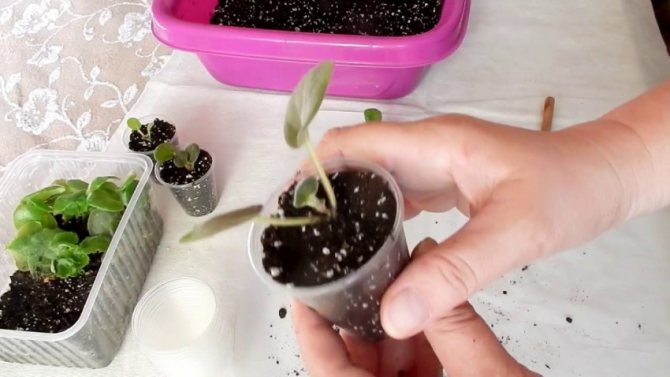

Which pot to choose
Today, two types of flowerpots are popular - plastic and ceramic.Each of them has its own number of advantages and disadvantages, but in any case, the plants do well and grow in both types. There is, of course, one big difference - the price.
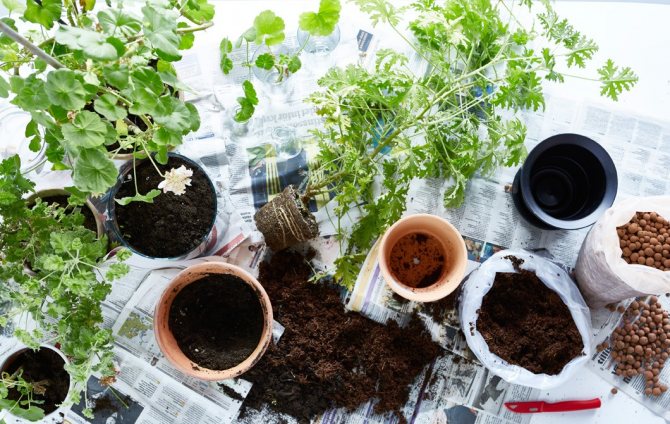

Ceramic and plastic pots have their pros and cons
Ceramic pots are a little more expensive and may not be affordable, especially for those with a lot of indoor plants. Many people prefer to have all the pots in the same color scheme and the same shape so that not only the flower, but also the flowerpot blends beautifully with the interior.
Plastic
Plastic containers are inexpensive, lightweight, transportable, have different shapes and colors for every taste.
But at the same time, among the shortcomings, one can note their fragility and instability. If the plant is large, it can easily roll over. Moisture through the plastic walls evaporates poorly, which can provoke root rot.
Ceramics
Ceramic containers are expensive, but they also come in different shapes and colors. They are resilient. The plant is warm in winter and cool in summer. Moisture evaporates well through the ceramic walls.
Among the shortcomings, we can note the weight, the deposition of salts on the walls. If the flowerpot is covered with glaze, it will not allow air to pass through well.
Important! Before choosing a pot, all the pros and cons are weighed. But the main thing in all this is proper care of the plant.
Gardening in November
At the beginning of the last month of autumn, if September and October were dry, winter watering of shrubs and trees is carried out, without which withered plants are more often exposed to freezing. In the first decade of the month, flowers are fertilized and the plants and soil around them are treated with a 7% urea solution. At the end of autumn, it is time to lay and cover climbing roses, clematis for the winter, as well as sow the seeds of annuals and some perennials.
In the last month of autumn, the tubers of begonias, dahlias and cannes are dug and cleaned from the ground for storage until spring planting, at the same time you need to check how the bulbs and tubers that you dug up in September and October are stored. Fans of lawns and lawns need to prepare the soil for sowing grass. Young shrubs should be wrapped in dense, breathable material, the ends of which should be sprinkled with earth so that plant shoots do not become easy prey for rodents. Plants that cannot hibernate without shelter are time to wrap up with material or cover them with spruce branches.
That's as if that's all. After that, all that remains is to clean up the garbage in the garden, rake and burn the last leaves, with the ashes of which you will fertilize the flower beds next year.
- How to care for mallow in a flower bed
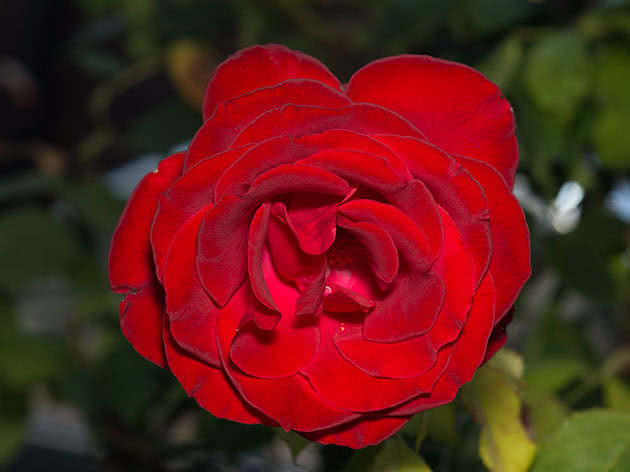

Further care
How to transplant indoor flowers at home is already clear. But it is equally important to provide them with proper care after changing locations.
In this case, you must follow the following rules:
- Immediately after the procedure, you should not place the pot on the window under the influence of open sunlight. Better to place it in a slightly darkened place for five days.
- It is also not worth watering right away, so that the roots, in search of moisture, take root in the new earth.
- It is not recommended to fertilize flowers immediately; it is better to do this a month or two after transplanting.
- Spray the leaves every week. But there are also those that do not require spraying.
Advice! Experienced gardeners recommend pinching or trimming the tips of the plant to promote growth, flowering, and nutrition.
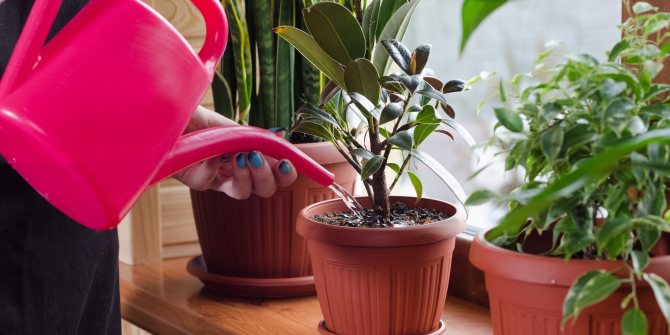

After transplanting, the plant needs to be watered
Install an artificial color lighting system
As you know, in winter, some flowers lack lighting due to the reduction in daylight hours. This mainly applies to orchids and succulents. To replenish the light, they need to provide artificial lighting with a special lamp. The plant should be located at such a distance from the lamp that it does not feel discomfort and at the same time receives all the missing volume of lighting.Also, the lamp must be periodically wiped as dust settles on it.
And what kind of work related to indoor flowers do you carry out in the fall and which of the following have already been done?
What to do if plant transplantation is not possible
It so happens that the transplant is impossible to carry out, since the plant is very large. But still, the soil in such a pot needs to be periodically changed, as far as possible, to fresh and rich in various trace elements. If this is not done, the plant will begin to wither, as the earth will be depleted, and all living things will simply perish.
It is impossible to remove all the old soil, but in such cases it is worth changing only the top layer. It is recommended to do this procedure every year or two. It is better to do this in spring and autumn, since a large plant requires nutrients and fertilizers more than others.
Each plant needs careful care: watering, fertilizing, pruning and replanting. It is not difficult to take care of indoor flowers, the main thing is to remember some rules and follow them.
What you need to know
Most importantly, you need to understand whether a transplant is desirable for your flower. If he does not need this measure, then, if enforced, it can damage or wither your room friend.
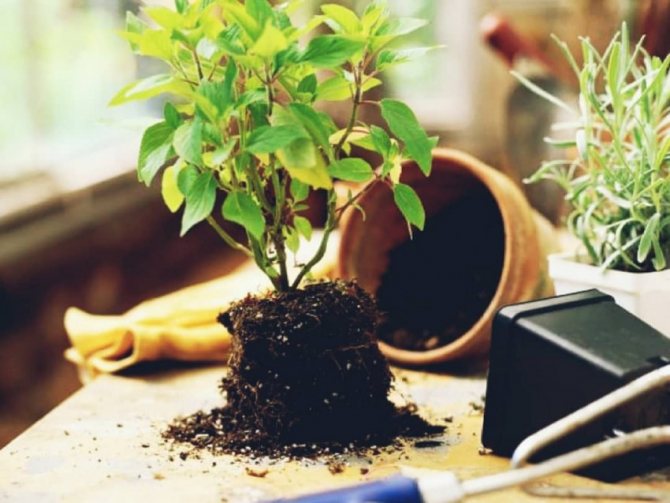

First of all, you must understand when the transplant is made. For this, as a rule, a calendar for transplanting house plants is used. If you don't guess with the timing, it can get sick or even die.
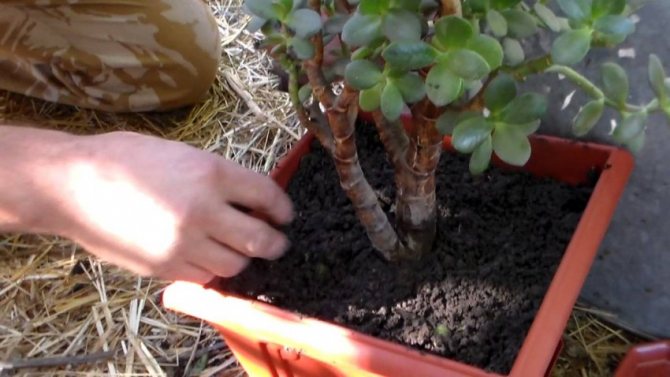

It is important to consider which type of transplant you will be using. It can be simply transferring an earthen clod from one pot to another, a full-fledged transplant, or replacing the initial (top layer) of the soil.
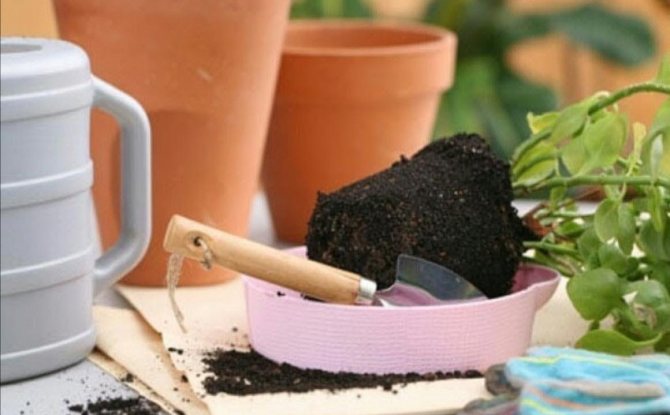

When transferring a plant from one container to another, strict instructions must be followed.
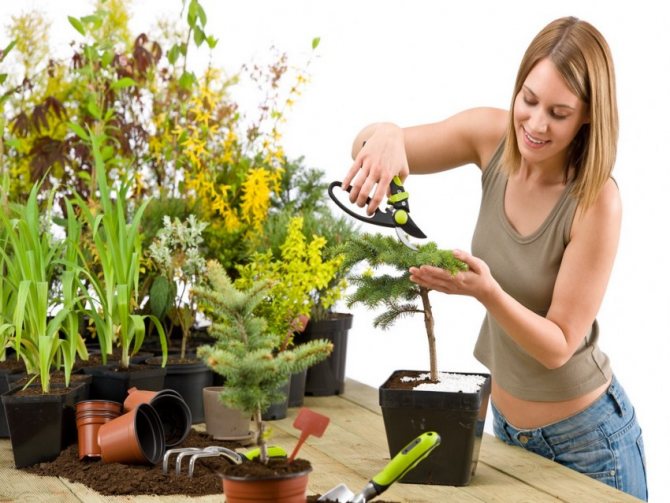

Pruning flowers in November
Pruning flowers that will have to be covered for the winter is the next step in preparing your garden for winter. Clematis and roses are cut in November. Clematis blooming on the shoots of the current year are cut short, and those that bloom on the shoots of the last year are not cut, only too long lashes are shortened. The floribunda rose and the hybrid tea rose are cut at a height of 45-60 cm from the ground, removing all unripe shoots. In miniature and polyanthus roses, only the inflorescences are cut.
- How to properly plant mallow in the ground
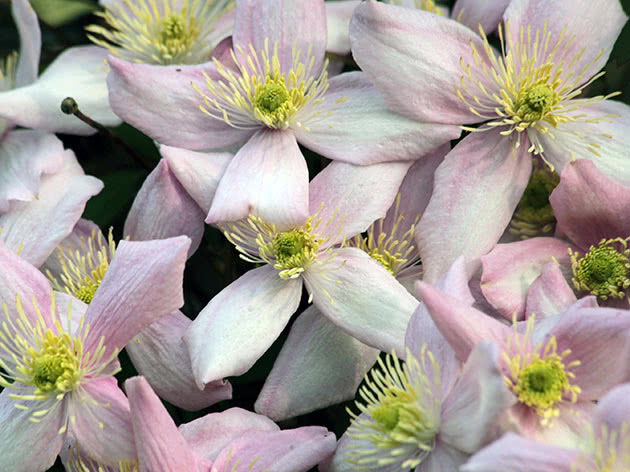

Some amateur gardeners, on the eve of winter, cut off the ground part of perennial flowers, but some do not, and all have their own reasons. Decide for yourself what is best for your flowers.

